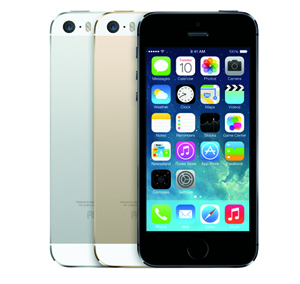The flagship iPhone 5S launched recently. The phone features a new chip that offers what Apple claim is desktop calibre performance, an improved camera and a fingerprint security scanner. With the addition of the fingerprint sensor, called Touch ID, alongside the existing Passbook application Apple clearly has the potential to create a more convenient payment experience.
Touch ID will make it easier to unlock an iPhone and speed up the iTunes authentication process. So the question is, with Apple reputedly having millions of cards on file how long will it be before this verification method extends beyond the Apple ecosystem; making purchasing easier on the high street?
Apple introduced EasyPay a couple of years ago as a way of simplifying its own retail experience. The service which is tied into the Apple Store mobile App enables users to scan products and pay for them using their card on file. The premise of simplicity and convenience meant that once the payment was completed on the App, the customer could literally walk out of the store, completely avoiding any queues at the till.
With the new iOS 7 update, Apple introduced another new addition that may well help transform the mobile commerce experience for both retailers and consumers alike. Apple introduced iBeacon, an addition that uses Bluetooth Low Energy technology to communicate with other devices, similar to that of PayPal – which they call Beacon. Effectively, by placing beacons in-store, retailers can achieve a more accurate location service that doesn’t rely on a connection to the Internet or a specific log-in to a Wi-Fi network. This technology has the capability to support engaging mobile customer experiences such as store check-in that can trigger the delivery of targeted offers and promotions. Importantly, retailers will need to tread carefully and judge how they leverage this technology and allow consumers to control when and how they interact.
With regards to payments, this technology is being promoted by PayPal as a way to support paying with smartphones. Clearly there is a great deal of attention and a lot being written about how the smartphone is transforming the way we shop and the way we buy. One thing is clear; this technology can certainly support low-friction mobile commerce.
What about NFC?
Aren’t we all supposed to be tapping mobiles using NFC for fast, secure payment in-store by now? And so, what does this recent announcement from Apple mean for the future of NFC technology?
Clearly the industry is busy debating which technology will win out. The question on every retailer’s mind is which technology to invest in and whether consumers will opt for tapping over scanning or some other innovative interaction at point of purchase. Perhaps the focus shouldn’t be on trying to predict a winner – the reality is multiple technologies will evolve and be adopted if they make consumers lives easier and drive revenue for the retailer. For many retailers who have invested in contactless, with hardware that supports NFC interactions, this technology is a great option – after all there are over 100 NFC devices available in the market today.
Equally important as convenience is security and the two must work hand in hand – trust and confidence in new payment methods remains paramount and the industry must continue to work hard to balance what could be the competing priorities of convenience and transaction security.
Retailers need the support of technology partners to help them navigate the choices available so that they can create an effective mobile commerce strategy and an implementation that supports their business needs. Retailers need to remain focussed on customers and how they can enhance the shopping experience of the growing UK population armed with a smartphone. For many, the first step may be digitising their offers and promotions onto a mobile device which can be introduced at point of purchase to capture redemption and build a complete view of customer value and campaign effectiveness.






